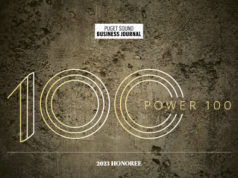As author of The Content Management Bible, a gospel on how to organize and publish information in the Internet age, Bob Boiko is something of an information evangelist.
Theology doesn’t actually enter into his teaching at the University of Washington Information School (the I-School) where Boiko is assistant chair of the Masters of Science in Information Management degree program. At least not yet. The degree program’s curriculum does, however, overlap with the schools of philosophy, public administration, bio-informatics and computer science and engineering. Is there an area where content management is not an integral factor? There’s something truly transcendant about creating order out of information chaos.
During the Internet’s renaissance period, Boiko was the founder and CTO of Chase-Bobko, a full-service information management, publishing and Web consulting firm which had a hand in many of the pacesetting online projects of MSNBC, Boeing and Motorola. In those wonder years, Bob played a part on the launch crew of Seattle Internet start-ups like HomeGrocer.com. Today, besides teaching at UW and authoring the next generation of his definitive content management tome, Bob maintains a consulting practice called Metatorial Services. Former partner Patricia Chase now runs an organization creating sustainable energy “boot camps” for government officials and partner Jason Andenoff pursued a career in environmental engineering.
We chatted with Boiko about the state of content management today and ways to integrate the best content management practices into an e-business.
Seattle24x7: Content management is finally becoming a standard practice in Website development and implementation. What took it so long to arrive?
Boiko: Information has always needed to be managed. We’ve been able to get away with having a very casual approach to it. But two things happened so that was no longer okay. The first is that the amount of information that people have to manage today has ballooned. It will continue to expand exponentially. Our technological capability to automatically collect and distribute it, as shown on the Web, is the other trend. You put both those things together and the time is now right for people to begin to take control of their information resources and direct them at the core things their organizations want to accomplish.
Seattle24x7: Many organizations seem to be struggling with how to work with this type of information?
Boiko: If you look at the physical assets of an organization, they’re very carefully managed. Like the stock in a grocery store, for example. They know exactly what they have in store. They have it appropriately arrayed on their shelves. They get new stock when they need it.
If you look at that same organization in terms of their information resources, it’s as if you backed a truck up into the back of the store and dumped out all the groceries and said “Okay, we’re open for business.” That’s how companies create and manage their information resources, which they would never do for physical resources. No large organization would manage their finances that casually. They would acquire a system and manage their financial organization the way they’re supposed to. The benefits have not yet been conclusively demonstrated so that these organizations will go out and do the same thing for their other information.
Seattle24x7: What is the right way and the wrong way to get started in developing a content management system?
Boiko: The biggest mistake I see people making with their content management approach is assuming a technology long before they’ve ever actually proved that that’s what they need. What an organization is likely to do is say, “Our website is out of control, we need a content management system.” That assumes their problem lies in managing this large Website. That may or not be the case, and, in any case, is a misplaced first statement. Their first statement should be, “What important information do we have to get to these various important types of people and what’s the best way to get it to them?” With that approach, most Websites would shrink by 90% because most of the information they have on them is not critical to anyone and is just there because it’s there.
The kind of analysis that I’ll take people through starts with the idea of understanding what content needs to be delivered to what people. Then we back up and say, how will we get that content? Well, we have these kind of people who can write it. Maybe we buy some of it from these sources. We chart the different sources, all the different places where that information originates. Then we chart how much of this stuff already exists. From there we can say, we’re going to need to hire three editors, four writers, and we’re going to pay “x” dollars a month for this much of this information from this organization.
Seattle24x7: Content management is no long restricted to the Webmaster’s domain?
Boiko: As the needs of an organization get larger and larger, that title of Webmaster becomes sillier and sillier. It’s not a master, it’s really a team effort. The proper job of a Webmaster is to make sure the Website stays up and running. The proper job of a Content Manager is to make sure that the flow of information stays well oiled between the people who create the information and whatever outlets, including the Website or sites, that information gets to. [24×7]
Bob Boiko is founder and president of Metatorial Services. He can be contacted at [email protected].

Bob Boiko is a content management guru whose favorite pastimes, outside of information management, include hiking, bicycling and snowboarding.




















